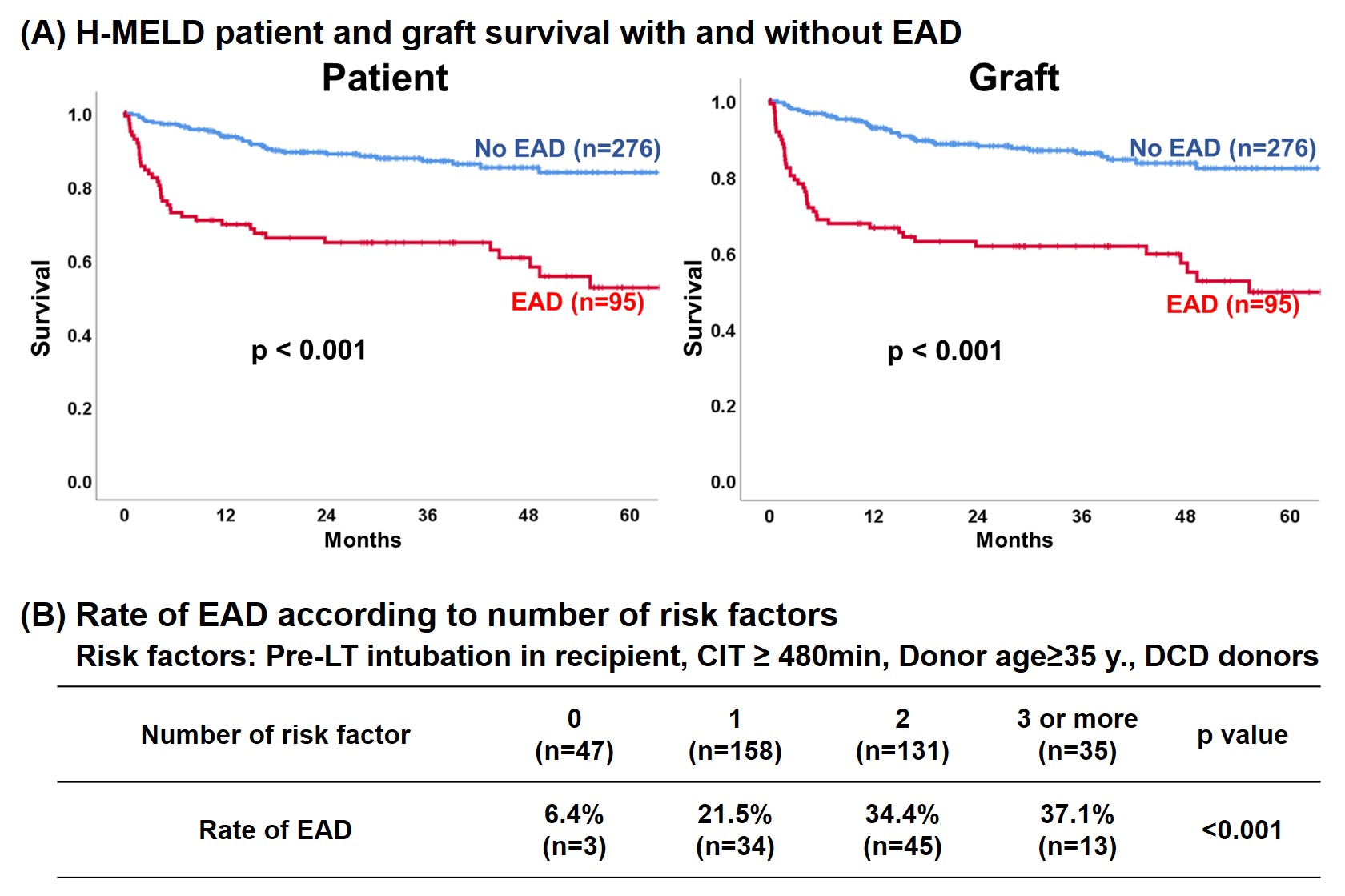Early Allograft Dysfunction in High Acuity Liver Transplant Recipients
Department of Surgery, The Dumont-UCLA Transplant Center, Los Angeles, CA
Meeting: 2019 American Transplant Congress
Abstract number: C284
Keywords: Graft failure, High-risk, Liver transplantation, Post-operative complications
Session Information
Session Name: Poster Session C: Liver: MELD, Allocation and Donor Issues (DCD/ECD)
Session Type: Poster Session
Date: Monday, June 3, 2019
Session Time: 6:00pm-7:00pm
 Presentation Time: 6:00pm-7:00pm
Presentation Time: 6:00pm-7:00pm
Location: Hall C & D
*Purpose: Organ recipient matching in Liver Transplantation (LT) has become ever-more challenging with the ongoing organ scarcity and increasing patient acuity. While the notion that high acuity patients need “perfect” livers is widely adopted in clinical practice data supporting this practice remain limited. We sought to identify predictors of Early Allograft Dysfunction (EAD) and analyze its impact on outcomes in High Model for End Stage Liver Disease (H-MELD) recipients.
*Methods: Multivariate logistic regression was used to identify pre-LT risk factors for EAD in H-MELD (MELD≥35) patients. EAD was defined as a peak AST or ALT value >2000 IU/mL during the first week post LT, an INR of ≥1.6, or bilirubin ≥10 mg/dL at day 7. (804 primary adult LT’s, retrospective review, single center, 2012-2017).
*Results: Of 804 patients, 46.1% (n=371) had H-MELD. EAD was observed in 25.6 % (n=95) of H-MELD patients. The incidence of EAD in H-MELD patients was significantly associated with poor 1,3, and 5 year patient and graft survival compared to H-MELD patients without EAD (Figure A). Pre-LT intubation (OR: 1.948), longer cold ischemia time (CIT, OR: 1.002 per min), older donor age (OR: 1.023 per year), and donation after cardiac death (DCD, OR: 4.688) were identified as independent risk factors of EAD on multivariate analysis. The incidence of EAD increased with the number of risk factors present (p<0.001) (Figure B).
*Conclusions: H-MELD patients developing EAD had significantly inferior patient and graft outcomes. We identified pre-LT intubation, older donor age, DCD donors, and longer CIT as independent risk factors for developing EAD. This large series clearly supports the use of younger, non-DCD donors while maintaining shorter CIT to minimize futility and optimize outcomes in high acuity patients.
To cite this abstract in AMA style:
Ito T, Lu M, Murray A, Graham DS, DiNorcia J, Agopian VG, Yersiz H, Farmer DG, Busuttil RW, Kaldas FM. Early Allograft Dysfunction in High Acuity Liver Transplant Recipients [abstract]. Am J Transplant. 2019; 19 (suppl 3). https://atcmeetingabstracts.com/abstract/early-allograft-dysfunction-in-high-acuity-liver-transplant-recipients/. Accessed December 14, 2025.« Back to 2019 American Transplant Congress

